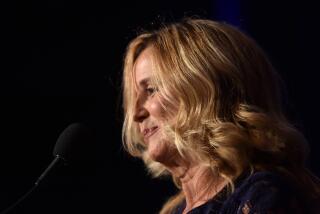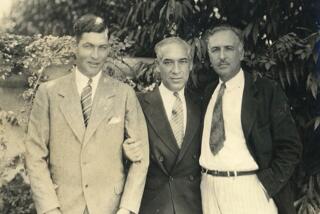Recasting Villains
- Share via
In your article about the terrific WideScreen Film Festival and the presentation of John Ford’s “Cheyenne Autumn” (1964), the usual reference is made concerning the reason why the great director made it (“ ‘Unsung Heroes’ Star in Wide-Screen Festival,” by Bill Desowitz, Sept. 19). Once again, the film is described as an apology for his depiction of Native Americans in his earlier work.
But go back to the first of Ford’s cavalry trilogy, “Fort Apache” (1948). The villains in the movie aren’t rampaging savages but the bureaucratic commission in Washington governing Indian affairs. At one point, John Wayne’s Capt. York describes it as “the dirtiest, most corrupt political group in our history.”
One year later, in “She Wore a Yellow Ribbon,” Ford, rather than glorify the soldiers slaughtering Indians, shows a cavalry platoon set to attack an Indian encampment choosing to run off the Indians’ horses to avoid conflict. In “The Searchers” (1956), he depicts the massacre of an Indian village by the cavalry that predates “Little Big Man” (1970), “Soldier Blue” (1970) and “Dances With Wolves” (1990).
Yes, there are negative stereotypes of Native Americans in the films of John Ford. But they exist within the parameters of acceptability for the times. They may be no worse than Ford’s constant depiction of his own Irish kinsmen as drunken brawlers. In either case, Ford presented the victimization of Native Americans long before he made “Cheyenne Autumn.” It’s quite possible that, by 1964, he didn’t think he needed to apologize for anything. It’s quite possible that he made the movie just because he wanted to tell a . . . good story.
MARC GERBER
Malibu
More to Read
Only good movies
Get the Indie Focus newsletter, Mark Olsen's weekly guide to the world of cinema.
You may occasionally receive promotional content from the Los Angeles Times.










